
Youth Policy Journal Fall 2019
Calafia Issue 2019.indd 1 10/22/19 8:25 AM
CAlafia INTERSECTIONAL FEMINISM
Calafia Editorial Board
Cendy Sarabia, San Mateo
Fatima Ramirez, Coachella
Loughlin Browne, Marin
Maria Torres, Fresno
Nayeli Veloz, San Francisco
Rachel Livinal, Merced
Yesenia Pacheco, Long Beach
Cover
Maria Torres
Design
Jarrett M. Ramones
Adult Lead, Editor
Michael Lozano
Advisors
Tim Haydock
Mary Schindler
Guest Writers & Contributors
Antonio Mejías-Rentas
Carlos Rene Castro
Chantera Walton
Esther Martinez
Isabelle Wolansky
Jessica Manzo
Symphreona Clark
Luisa Garate
Valentina Guevara-Hernandez
Joel Hernandez Fregozo
Youth Media Programs
Coachella Unincorporated
The kNOw VoiceWaves
We’Ced YR Media
CAlafia
Calafia Youth Policy Journal Issue 5
Media Mentors
Jennifer Upshaw Swartz, Marin Independent
Journal
Kerry Klein, Valley Public Radio
Alex Hall, KQED
Rebecca Plevin, The Desert Sun
Joaquin Jimenez, Domingos en Español KHMB
Special Thanks
Jen Ramos
Ana Ramirez
Rebecca Plevin
Keith Petiti
Gloria Torres
Georgia Woods
Andrew Frater
Willow Baker
Anthony Pacheco
Crystal Niebla
The Lozano Family
Published by Youth Leadership Institute
Youth Leadership Institute CEO
Patricia Barahona
Hi,As the first all-female Calafia editorial board, the stories we were compelled to tell consistently highlighted the women around us and their experiences. Stemming from various communities, we wanted to acknowledge the lack of diversity in mainstream feminism and shed light on the issues that impact marginalized women. When we initially drafted ideas for stories we wanted to tell, not only were all of our stories coming from a feministic point of view, but they were all ideas sprouting from our own experiences, good and bad, as a result of being young women. It was vital for us to share the stories of honorable women, so all the generations, young and old, can learn the narrative we have chosen to tell.
In 1989, black feminist Kimberlé Crenshaw wrote that conversations around race and gender never included the experience of people who are affected by both the systems of racism and sexism together. In actuality, she wrote, the experiences of a black woman are often racialized and gendered at the same time. Her writing helped to create a feminist movement separate from the white feminism that had ignored the needs of women of color for hundreds of years. Intersectional feminism became advocacy for black women, by black women, focusing specifically on giving a voice to their unique experience at the intersection of race and gender. In more recent times, the term is often used to refer to feminism that focuses on all aspects of women’s identities, including sex, race, sexual orientation, religion, ability, socio-economic status and more.
Youth Leadership Institute
209 9th Street, Suite 200 San Francisco, CA 94103 yli.org
Twitter: @ylinstitute
Instagram: @ylinstitute
Facebook: @youthleadershipinstitute
Email: info@yli.org
In this youth-led magazine, you’ll be reading about how these intersections apply to our lives and others’. You’ll read the story about a lesbian activist teacher who teaches the history of LGBTQ+ people in her classroom, an unflinching commentary on how school history textbooks don’t cover females’ histories, and narratives direct from young women themselves on the constant harassment they go through while walking in public.
Calafia is a production of Youth Leadership Institute and was made possible by the W. Clement & Jessie V. Stone Foundation
Youth Media Monterey County
Boyle Heights Beat
South Kern Sol
Many stigmas persist today, even from other people within the LGBTQ+ community, as well as the heteronormative expectations of friends and family. That’s why the hardships of being a queer youth is touched upon, most specifically within the bisexual community. Step into the shoes of up-and-coming model Aaron Smith to hear about her trials and triumphs after accepting her own identity as a woman, despite being told she was a boy.
We also take on women’s cultural issues, such as the pressures of being a young Latina in a traditional family clashing with the outdated ideals that come with it, something most Latino youth can empathize with. Us editors are here to share the unheard stories happening across California, giving women a voice. Though many of us can relate to these issues, sometimes in the past we may have remained silent. If any reader sees themselves in these stories, feel free, feel empowered to share yours and speak out.
Calafia Editorial Board
Calafia Issue 2019.indd 2 10/22/19 8:25 AM




Contents 03 This Is What It Is Like to Walk in Public as a Woman Weigh-In Celebrating Black Hair 05 06 10 Feature 09 14 Defining Latina Beauty Analysis 13 Working in Coachella’s Fields: A Sisterhood Amid Grapevines 17 Profile Enterprise 07 Fall 2019 Bringing Queer History into the Classroom Missing Herstory: A critique of school textbooks A Bi-Divide in the LGBT Community 15 Cultivating The Next Generation of Sikh Leadership Growing Up Latina… with Many Restrictions 18 Op-Ed Art The Murals of Boyle Heights Music Women on the Rise: Acts We’re Excited About 11 Fashion Rural Youth Fashions Identity to an Evolving Modeling Industry Calafia Issue 2019.indd 3 10/22/19 8:25 AM
This is what it’s like to walk in public as a woman
Catcalling knows no bounds. It’s time to change that.
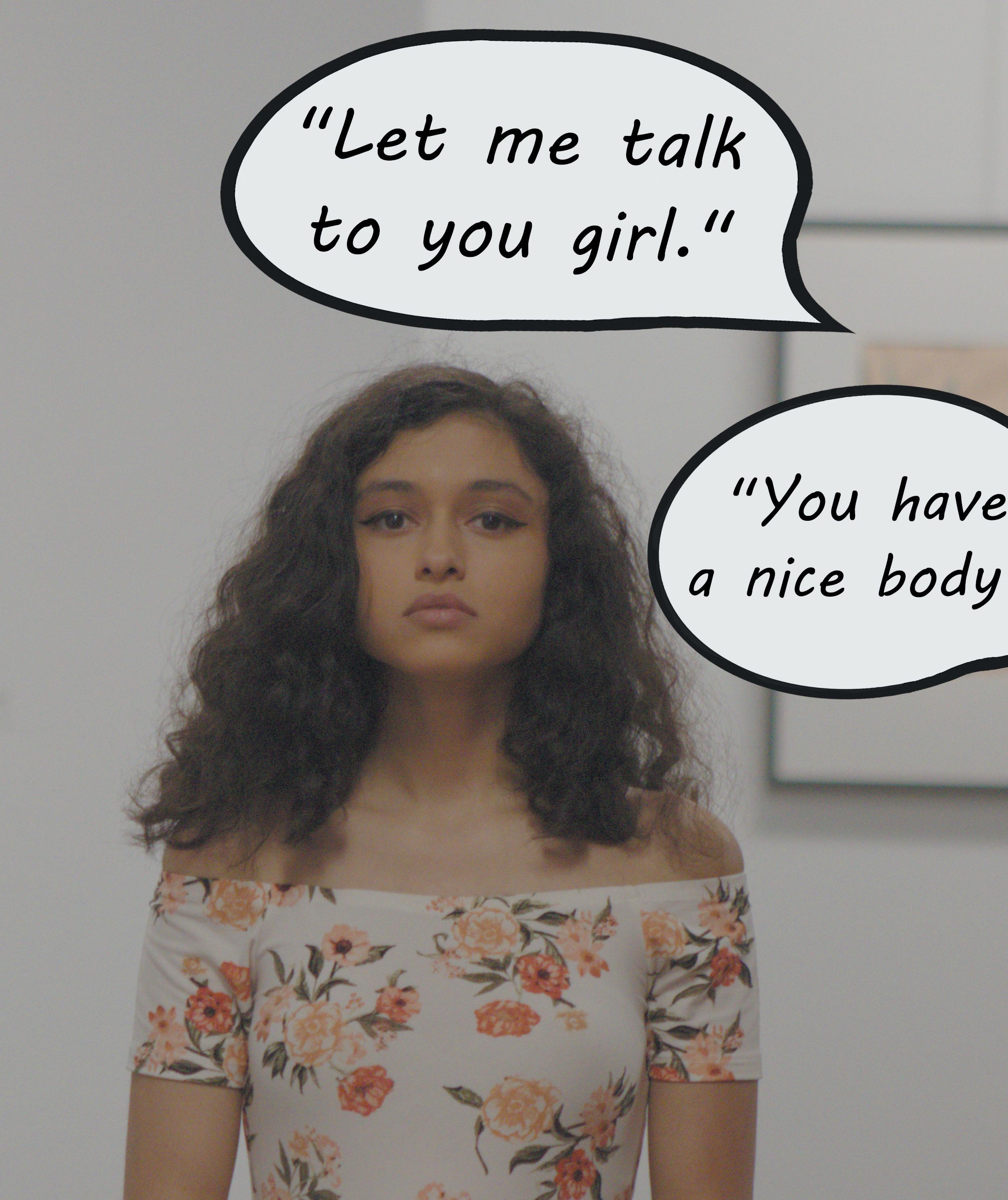
Many people experience being harrassed while in public, especially women. In 2014, Stop Street Harassment surveyed 2,000 people in the U.S. and found that 65% have experienced street harassment, 23% have been sexually touched, and 20% have experienced being followed. Street harassment can include being on the receiving end of all kinds of unwanted behavior: honking, kissing noises, whistling, being followed, sexual comments, and more.
Ulonie Garza, 19, almost always go in public with friends or someone she trusts. Feeling safe in public depends on where she is and who she is with.
"My parents always told me that at least if one of us was kidnapped, the other could go and get help," she says.
Ulonie has experienced being cat-called, even while she was in high school. There were a few boys who made her uncomfortable by making comments about her body.
"The worst instance was when a guy tried to record me walking away from him," she says.
Maria Torres
Growing up, Ulonie witnessed the male members of her family having the freedom to go out without the same worries. Watching them enjoy this freedom reminded her that she couldn't go out alone due to her being a female.
Ulonie suggests that for people to feel safer in public, they should know how to protect themselves; she adds that she has learned how to get out of a dangerous situation by being aware of her surroundings and constantly thinking of ways to get out of a bad situation.
03
Calafia Issue 2019.indd 4 10/22/19 8:25 AM
The kNOw Youth Media
Angelique Vargas, 19, mostly travels alone via the city bus but doesn't feel safe. She has heard of girls her age gone missing or killed in her area.
"It's sad to say, but I don't feel safe outside unless I'm with a guy," she says.
Angelique has been cat-called inappropriate remarks in a busy street. She also has been followed by people, but in all situations, she got out safely.
“Hey girl! You like d*ck?” “Girl, you got a boyfriend? Well, let me hit that if not.” These are remarks that were told to her.
One incident occurred while Angelique was with her younger cousin. Both of them were wearing Catholic items and a man came up to yell at them. He screamed that they were sinners for being Catholic and that they need to go to his church, instead.
Angelique suggests getting a
Angel
legal weapon like a pocket knife or anything that you can use to defend yourself and recommends familiarizing yourself on how to use it (laws on carrying pocket knives might vary across different cities). Be aware and cautious because "you don't know what is gonna happen when you walk out," Angelique says.
Angelique hopes that men understand “no” means no. Also, she suggests that if you see a woman in distress because of a man’s actions, help her. When she was in a distressed situation, nobody around her would help her or interfere. If you witness a woman or anyone being harrassed while in public, please help the person to get out of the situation safely. Every situation is different, so be careful when engaging. You could share the experience by sharing it on social media and share a picture of the harasser, if safe to do so.
zyanna
Georgia
Georgia G. Woods, a transgender woman, is afraid of being in an unpleasant situation that she wouldn't know how to get out of. Georgia feels more comfortable being with friends who fully accept her.
Depending on the place and who she is with, Georgia feels safe most of the time.
"If I’m alone in a lesspopulated area, then I start worrying about my safety," she says.
She has not been insulted to her face but she has overheard conversations about her. She has heard people saying negative comments, using the t-slur and f-slur towards her.

Georgia believes that men have fewer worries about being alone in public. However, she does think that it’s unfair how society is teaching women to fear all men, because not every man has bad intentions.
Georgia believes the only way to end cat-calling culture and create a safer place for everyone is to teach children that everyone is equal and that gender doesn't matter.
“It comes down to exposing new generations to a more neutral view of gender and the people around us,” Georgia says.
She explains that we should remove the stigma of gender roles and stereotypes from modern media and teach children that, "we are all simply people trying to live our lives."
Zyanna, a 19-year-old, fears that she will be either verbally or physically attacked at any time, so late-night walks are terrifying.
She has encountered catcalling many times:


“Aye girl, how old are you? I just wanna’ talk.”
“When are you gonna be 18?”
“Come on, I wanna get to know you!”
She chooses to ignore the insults by having
her earbuds in. She is quiet and can look mean at times, she explains, because growing up, she was taught that black people were taught to walk around angry and to not look approachable so no one would disturb them.
“No one wants to bug the angry black girl. I like to look unapproachable,” Zyanna says.
“Look mad, be bold, be brave, and keep pepper spray on you,” she says, adding that if you have the option, take self-defense classes.
Fall 2019 Calafia Issue 2019.indd 5 10/22/19 8:25 AM
Celebrating My Crown with Confidence & Compliments
The journey to re-loving my natural hair.
Hair has always been important to me. It's how I express myself. Whether or not my hair is done can affect my attitude or how I approach certain situations. And if my hair is not done it can also be detrimental to my confidence.
My views on hair have been the same since I was a child. In elementary school, my confidence was probably at an all-time high. My mother did my hair every two weeks so I always looked cute. I loved the sound of my beads knocking together so every chance I got I would turn my head so hard my neck could have broken, so that everyone would hear them. I did that so many times the school librarian actually yelled at me one day, "for goodness sakes Chantera, we see that your hair is done, now will you stop!?" I didn't.
In middle school, those values held true but I refused to let my mother put beads in my hair because, “I’m a big girl, mom!” I started straightening my hair but so much that my ends were damaged and dry and my hair was falling out.




It was when my sister came back home from her first year at college in the bay area that her hair was all weird. My mom had asked "girl, what's going on with it?" Because when she left her hair was trained to stay perfectly straight, literally not a hair out of place. She told us she was going natural and all the girls

at her school were doing it. Of course, being the little sister, I didn’t want straight hair anymore because “I wanna be natural like tee-tee! I remember going in the bathroom and slapping some Cantu leave-in conditioner on my hair and her saying, "Chan, that's not how you do it." When I became serious about being a natural I realized how damaging it was pressing my hair all the time. During my transitioning phase, I would wear my hair in a pineapple (ponytail puff) almost every day. And during my senior year my hair had grown enough that I was comfortable cutting off all the straight ends.
Since then my hair has been flourishing, my curls are poppin', and my twist-outs look amazing which means I usually feel amazing. Other naturals have even started complimenting me, asking me what products I use. *Wipes tears* Thank you, sis.
Black people, historically, have had an interesting relationship with their hair. In the late 1960s and early 1970s, the Black is Beautiful movement began. Both men and women stopped straightening their hair and wore afros to show that black hair was not inherently ugly. This style was also a representation of black beauty and was meant to eradicate the idea that black people had to live up to eurocentric standards.
Chris Rock addressed the topic in 2009 with his movie "Good Hair," interviewing black icons like Raven-Symoné, Nia Long, Ice-T, and Maya Angelou on their views about accepting black hair and stigma. He was motivated to make the movie after his daughter asked him why she didn't have "good hair."
Such questions linger today as discrimination also is still very prominent. Mississippi news anchor Brittany Noble Jones was fired from her job after being told her natural hair was "unprofessional" and that people wanted to see a "beauty queen" on TV news. Hair discrimination is still such a huge problem in 2019 that, in California, leaders passed The CROWN (Create a Respectful and Open Workplace for Natural Hair) act, prohibiting natural hair discrimination in schools and workplaces.
I love my natural hair, my natural hair is important to me and the government had to make a law for people to accept the hair that grows naturally from my head -- in 2019.
05 The first one is
in 2006. It
day at
me
was picture
school.
Chantera Walton VoiceWaves
This one is also a school picture of me in fifth grade so that was like 2011-2012.
Calafia Issue 2019.indd 6 10/22/19 8:25 AM
This one was taken in 2019 for my official Youth Reporter photo!
Defining Latina Beauty
Esther Martinez
There are many criteria to satisfy in order to be thought of as beautiful, however these pervasive ideas also limit the ways a woman can look beautiful.
MONTEREY COUNTY, Calif. - The first thing you see when you walk into Tu Estilo Hair Boutique are women getting their hair dyed ombre or getting it styled with loose waves. They could be there to look their best, or they could be trying to fit the stereotypical Latina look that has been created by society to fit in with the American culture.
The perception of beauty varies greatly around the world. Business Insider published a story titled, “How designers in 18 different countries photoshopped this model after being told to make her beautiful.” Different countries changed the model to fit their definition of beauty. The article stated, “China and Italy, in particular, had the thinnest Photoshopped images while Spain and Colombia kept the woman fairly robust.”
In Latino communities, the standard of beauty commonly revolved around women with curvaceous bodies and dark hair. This idea has evolved to the point that having lighter hair and skin was viewed as better and an advantage. This unattainable aspiration of being the “perfect woman” has caused many Latinas to believe that beauty can only be achieved by having these characteristics.
Not everyone buys into it, but sometimes not buying into it is a struggle in itself.
Kayla Mendoza, a rising senior at Salinas High School said, “My definition of beauty is being comfortable with your beauty, and if it means putting on makeup or not, you still have beauty.”
Mendoza chose to change her lifestyle and lost a lot of weight. This was both influenced by social media and by health problems.
Mendoza said, “I have looked at girls with nice bodies, makeup and hair and I ask myself, ‘Why didn’t God create me like that? Why did he have to create me like this?’ It makes me feel sad and depressed when I think those things about myself.”
Today, it’s not just about having big breasts, a huge behind and an impossibly thin waist anymore.
There are many criteria to satisfy in order to be thought of as beautiful, however these pervasive ideas also limit the ways a woman can look beautiful. As Briana Torres, a makeup fanatic and rising senior at Alisal High School, said, “[It’s] clear skin, skinny face, skinny waist, complexion, long lashes… someone can have a beautiful personality and people can oversee the outside image for the person they are inside.”
All Latinos no doubt have watched at least one novela in their lifetime. Latina actresses choose to play these characters, but if you notice many actresses cast in these roles have a Western, American look. For example, many people might not realize Jessica Alba, who has fair skin and lighter hair, is Latina.
“Media such as television and social media create stereotypes and certain characteristics in the way a person should look—a body of a determined size or to have your nose look a certain way,” said Irene Mondragon, a 24-year veteran of the beauty industry and the owner of Tu Estilo Hair Boutique.

“It presents and creates problems for women like low self-esteem for not gathering these requirements and that is very negative for me.”
These media outlets that define the ideal kind of beauty cause women to self-harm, verbal or otherwise, such as applying harmful words to describe themselves when they compare themselves to other women.
Jamine Mejia, the student body president at Alisal High School and a fashionista, said, “I honestly believe that I call myself fat and ugly because I want to mentally prepare myself when someone says that my body does not fit the standard beauty size. I feel that if I repeat this to myself, it will not hurt me as much.”
Social media and society have created this unrealistic sphere of beauty that needs to be met. Not all women make the cut, but they shouldn’t have to. Beauty shouldn’t be defined by others, but instead by oneself because that is the only way that we will truly know what beauty is.
“My definition of beauty is being comfortable with your beauty, and if it means putting on makeup or not, you still have beauty.”
Fall 2019
Youth Media Monterey County
Calafia Issue 2019.indd 7 10/22/19 8:25 AM
Photo by Monterey County Youth Media Reporter, Carlos Rene Castro.
Disappearing murals erase Boyle Heights history
Luisa Garate
Boyle Heights Beat
On an exterior wall of a busy Boyle Heights corner, the mural “El corrido de Boyle Heights” (“The Ballad of Boyle Heights”) depicts neighborhood musicians, a singing woman and dancing newlyweds.
Painted in 1983 by the East Los Streetscrapers, a collaborative public art studio co-founded by Wayne Alaniz Healy, the mural shows local musician Margarito Gutierrez playing a fiddle, while El Piporro, a famous Mexican actor, singer and songwriter, plays an accordion.
While the mural pays homage to the community, it has been severely damaged over the years, even after being restored by the Los Angeles Mural Conservancy in 1990.
Los Angeles was once known as the city of more than 1,000 murals, but experts estimate that 60 percent have vanished, and more have been defaced. Over the years, some murals around Boyle Heights have been tagged or whitewashed. Many of the murals depicted the 1960s movement for Chicano equality. While there have been efforts to restore some murals, few have succeeded. Artists and historians fear that the community no longer values the murals and that this important part of Chicano history could be lost to future generations.
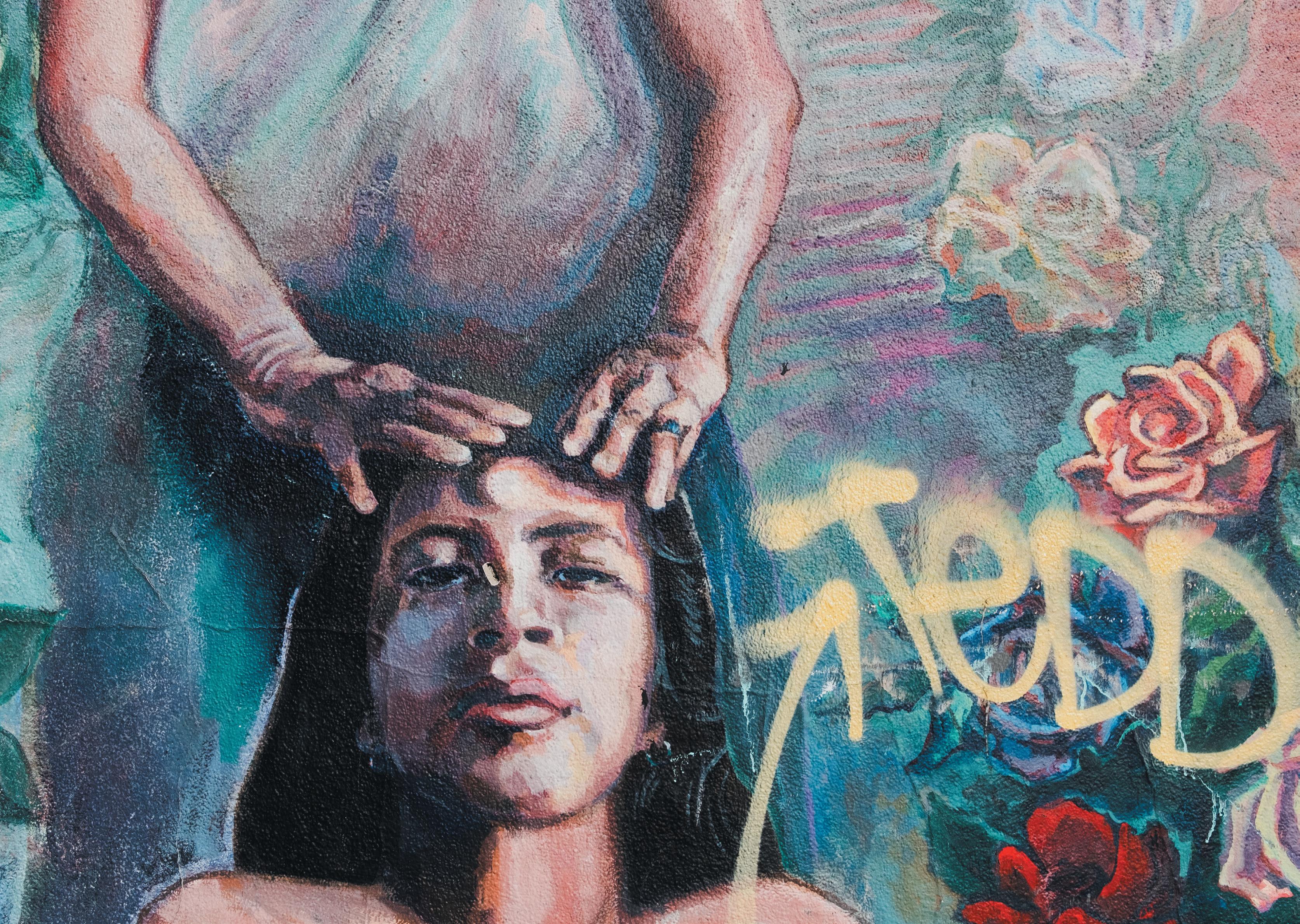
“The murals are being destroyed because they say the truth about who we are,” says Ernesto de la Loza, a muralist for over 50 years who lives in Echo Park.
Of the 43 murals he has painted, only 11 have survived. One of his most well known murals, the “Resurrection of the Green Planet,” is located on Cesar Chavez Avenue and Breed Street. The mural, which has been severely vandalized, portrays the preservation and protection of the earth.
“If this continues happening, much of our history will stop being represented through different forms,” says Isabel Rojas Williams, former director of the Los Angeles Mural Conservancy. “I think that teens and youth should take action to keep these murals, as this is what we are.”
Resurrection of the Green Planet, by Ernesto de la Loza Photo by Valentina Guevara-Hernandez
“The murals are being destroyed because they say the truth about who we are.”
07 Calafia Issue 2019.indd 8 10/22/19 8:25 AM
Boyle Heights mural celebrates women’s ‘Empowerment’ Antonio Mejías-Rentas

When Isabel Peinado was 15, she spent the summer of her sophomore year at the Los Angeles County High School of the Arts painting her first public memorial.
Over 600 hours –from late June to early August, in 2017– she put up 16 images of inspirational women on the side wall of a Boyle Heights market.
Titled “Empowerment,” the mural pays homage to an eclectic group of “inspirational” women that includes labor leader Dolores Huerta and Mexican painter Frida Kahlo, as well as civil rights activist Rosa Parks, U.S. Supreme Court Justice Sonia Sotomayor, Nobel Peace Prize winner Malala Yousafzai, the late singer Selena Quintanilla Pérez and comedian and TV host Ellen DeGeneres.
Boyle Heights Beat
In the process of painting “Empowerment,” the budding muralist earned the Girl Scouts’ highest honor, the Gold Award.
“I am so grateful I got to paint this mural in Boyle Heights,” said the teen artist, who lives in Alhambra with her family.
“Seeing the face of little girls passing by and asking questions about the mural gave me a sense of accomplishment.”
The mural originally was to include only Latina figures, but the young artist decided on a more inclusive vision. “I want women of all different races to feel they’re represented,” said Isabel, who gathered input from her mother and community members for the project.
Among her choices, Isabel said she included DeGeneres because she wanted to represent LGBTQ pride and the Virgin of Guadalupe –the most ubiquitous image in Los Angeles murals–because she is Catholic “and she has been a part of my life all my life.”
The other historic figures in the mural are Mexican poet Sor Juana Inés de la Cruz, astronaut Mae Jamison, author and activist Hellen Keller, Princess Diana of Wales, campaigner against slavery Susan B. Anthony and author Jeanne Wakatsuki Houston. The mural also includes two generic female figures: one a young girl and the other a mother and child.
Isabel also said she wanted “to remind people that we are a country of immigrants and that’s what makes us unique and beautiful, like the women in the mural.”
Loza
Empowerment, by Isabel Peinado
Photo by Antonio Mejí-Rentas
Fall 2019 Calafia Issue 2019.indd 9 10/22/19 8:25 AM
Bringing Queer History into the Classroom
A lesbian, activist, and teacher of 15 years, Jen Bowman has seen faculty and students become more open to her queer curriculum and fearless class discussions.
Her classroom is full of posters of inspirational quotes and knowledgeable women like Abigail Williams and Susan B. Anthony who have fought for women’s rights. Any normal classroom day had me sitting in a desk, listening to the amazing information and lessons that she would have for us during the day.
Identifying as a strong lesbian woman, Ms. Jen Bowman has been teaching in San Francisco for 15 years now. Ms. Bowman comes across very educated; she has short stylish hair and big square glasses. One time she brought a hot sauce that she made from the chilis she grows in her backyard.
Her history class has more to it than normal history classes with her way of noticing the changes in society and how her students react to major issues over the years.
“We are all living through a time when women and LGBTQ+ people are under assault from our current administration,” Ms. Bowman said. “However, I have never seen my students more passionate about challenging patriarchy and heteronormativity.”
She brings the real world issues into our class. She attended the Women’s March in Washington, D.C., on January 21, 2017. Her lectures on women’s history and LGBTQ+ people captivate us all, making us better allies.

The best part of the week would be when we did posters or fun activities as a way of learning all the information she was giving out to us. “It is imperative that schools and teachers create spaces for students to explore queer and feminist issues, identities, and history,” Ms. Bowman said.
But it wasn’t always an easy path to get there.
Reshaping the Classroom
When Ms. Bowman started teaching, it was in 2004 with middle schoolers. It was a hard start because women and LGBTQ+ issues weren’t as accepted in school dialogues. When she educated her students about LGBTQ + people, she would hear students say things like, “ewww, I am going to tell my mom about what you're telling me.”
Some parents would come into the classroom to talk to her about what their children were learning, but ended up being okay with it. Back then, even in “gay-friendly” San Francisco, you would need a parent to sign a paper with consent to letting their children learn about this — information that was obviously not in textbooks.
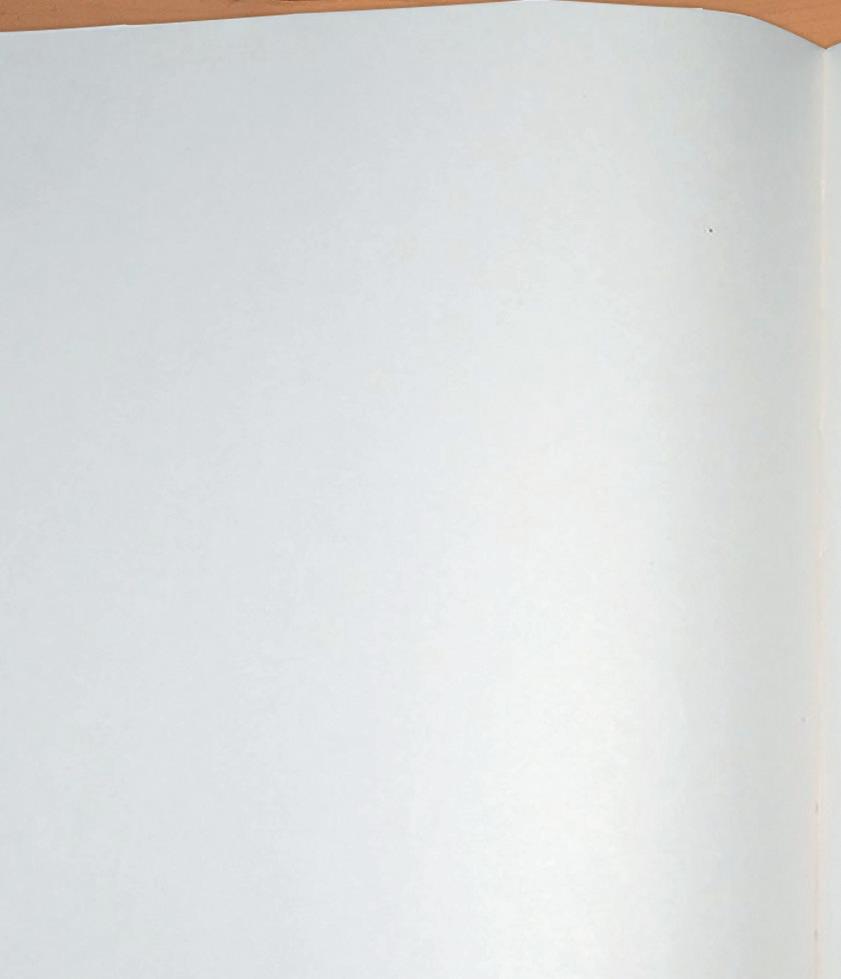
Things took a different turn when Ms. Bowman worked with a principal that was homophobic, she said. Another teacher wore a shirt that read “I support gay people” and the principal told him to remove his shirt.
Back then, and somewhat to this day, teachers were scared to talk about these topics because the world didn’t accept differences in sexuality or gender identification, or even the fact that women are just as powerful as men.
Although this was all in her first year of teaching, nowadays she finds that the way her students think has shifted, particularly in high schools compared to middle schools.
They are more understanding and are interested by the topics, she said, and they notice that it’s becoming a problem again that queer people are not being accepted and women aren’t being valued for what they deserve.
Teaching “Outside the Textbook”
The spark of Ms. Bowman‘s way of teaching is the material she teaches outside of the textbook; the information that is not in the textbooks.
To get us more engaged, she would ask “what would you like to learn today?” “Is this topic interesting? Do you guys want to change it up a bit?” Naturally, we talk about the issues together as a class; exactly everyone would give their point of view. It wouldn’t surprise me if she would get the quietest person in class to speak up.
When she uses the textbook in class, she would always challenges us to ask, “what is missing from this information?” She tries to find a connection between the topic and her students, which makes the class so engaging, keeping her students up-to-date with recent information. When we found out DT got elected, we started talking about how life was going to be. In many classes, we talked about the women’s movements. We talk about how immigrants have been treated.
A Thank You

Ms. Bowman told me that she will be teaching elsewhere at George Washington High School. I am pretty sure she will make the same impact as she did for me at Mission High School. Thank you to all those Ms. Bowmans out there who teach outside the textbook to let us know what true history really is. Every detail, every difference matters.
 Teacher extraordinaire Jen Bowman speaks to Vice News while attending the Women’s March in Washington, D.C., on January 21, 2017 (Vice YouTube screenshot).
Teacher extraordinaire Jen Bowman speaks to Vice News while attending the Women’s March in Washington, D.C., on January 21, 2017 (Vice YouTube screenshot).
09 Calafia Issue 2019.indd 10 10/22/19 8:25 AM
YLI San Francisco Nayeli Veloz
Missing Herstory A critique of school textbooks
Yesenia Pacheco VoiceWaves
There is an extreme lack of female content in history books. Students attending California school districts are required to learn about four major eras essential to the foundation of America: colonization, The Great Depression, The Civil War, and World War II. Throughout these events we notice two patterns: white men are American heroes and women must not have existed.
Throughout my years attending the Long Beach Unified School District, I cannot recall learning about as many key women as there were men. Harriet Tubman was one, and in fact the only one who got more than a paragraph. There was a chapter on Mother Teresa, but my history teachers didn't feel the need to include her into our curriculum.
The majority of women’s accomplishments are erased from our students’ textbooks and those who remain do not share the same glory as their male counterparts. As a sophomore in high school, I remember being taught that Marie Antoinette was the sole reason for King Louis XVI’s downfall and was single-handedly to blame for the French Revolution. This wasn't because my teacher was a woman-hater, this was simply how the book presented her.
Marie Antoinette is known as a symbol for greed, extravagance, and everything wrong with monarchy. Although she wasn't a charitable woman, she was not how historians portray her. "At least four members of the royal family spent more on clothing than she did—including Louis XVI’s brother the comte d'Artois, who ordered 365 pairs of shoes per year," according to Becky Little of National Geographic.
Arguably the most iconic woman in history is Cleopatra, the last pharaoh in Egypt. A strong woman that ruled with a strong fist, surely she's represented as such? No, when most people think of Cleopatra they picture a treacherous whore who slept her way to power (why is her body your main focus, historians?)
She really only had two lovers in her lifetime, which isn't that much considering the era and is even pretty low for today's standards. Cleopatra was not a sex symbol and should not be remembered as such. Her legacy should be connected to her ability to flourish Egypt's economy through trade and her intellect in philosophy, public speaking and having known about a dozen languages -- not because of who she slept with.
Although there are units covering the civil rights era (as short as those chapters may be) the only names that seemingly stick to memory are Malcolm X and Martin Luther King Jr. But if black history itself isn't a focal point in the classroom, then the history of black women is almost nonexistent.
What isn't included in the textbooks is Claudette Colvin, which is unfortunate because it was her actions that inspired Rosa Parks to refuse to get up from her seat (something that 15-year-old Colvin did nine months earlier). She, too, was arrested and is often neglected from history books altogether.
If represented at all in history books, women are likely presented to young minds as promiscuous, overspending, and troublesome. If the authors of these textbooks were asked to summarize their views of women throughout history, they would likely shrug and promote the popular misconception that women be shopping.

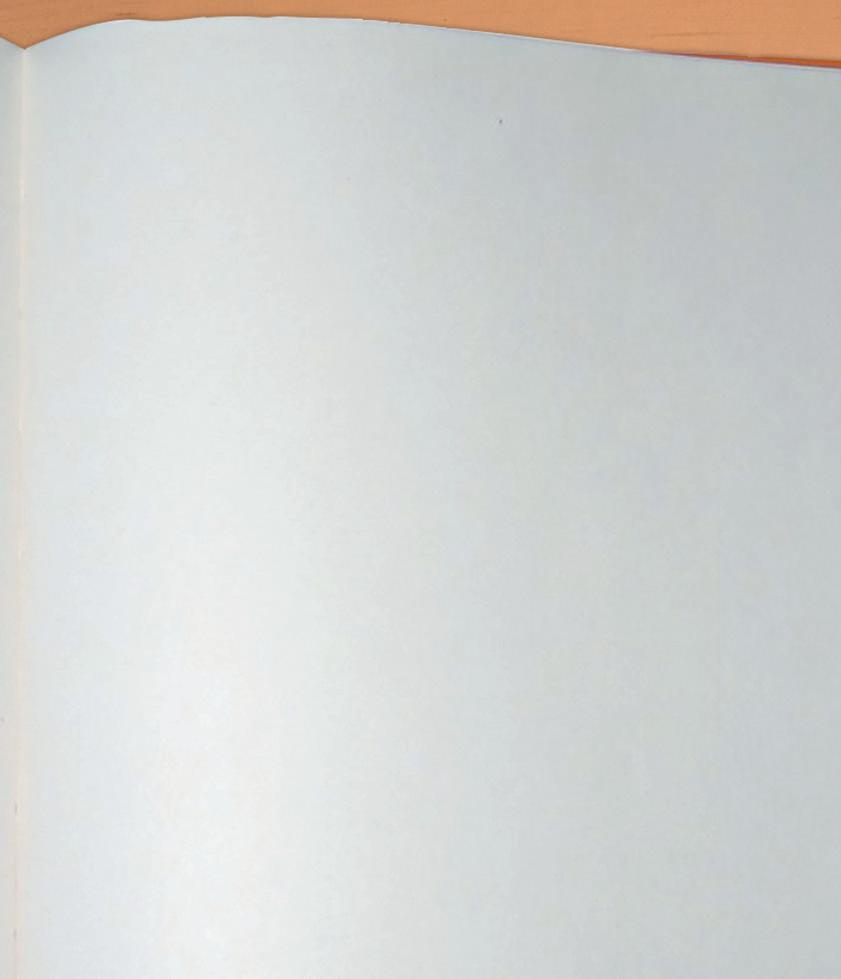
I don't know what it will take to change curricula districtwide, let alone statewide, but encourage family members and friends to teach about strong women in history. Feel free to even share the links below with your teacher. Here are some resources to get started:
Instagram: @feminist.herstory posts photographs of unrecognized but influential women: Scientists, war heroes, and iconic women from all eras worldwide.
@bayarealesbianarchives covers the lesbian history of the bay area.
@race_women praises black women who as early as the Suffrage Movement promoted feminist ideals.
Podcast: For each episode, The History Chicks profile an important woman in history in a very detailed, biographical style. Hear them on Spotify or Apple podcasts.
Children’s Books:
Little Dreamers: Visionary Women Around the World by Vashti Harrrison 101 Awesome Women Who Changed Our World by Julia Adams.
Commentary and graphic by Yesenia Pacheco
Fall 2019 Calafia Issue 2019.indd 11 10/22/19 8:25 AM
Rural Youth Fashions Identity to an Evolving Modeling Industry
Aaron Smith, a 17-year-old high schooler from Atwater, brings her identity in front of the camera despite controversy surrounding gender norms in the Central Valley.
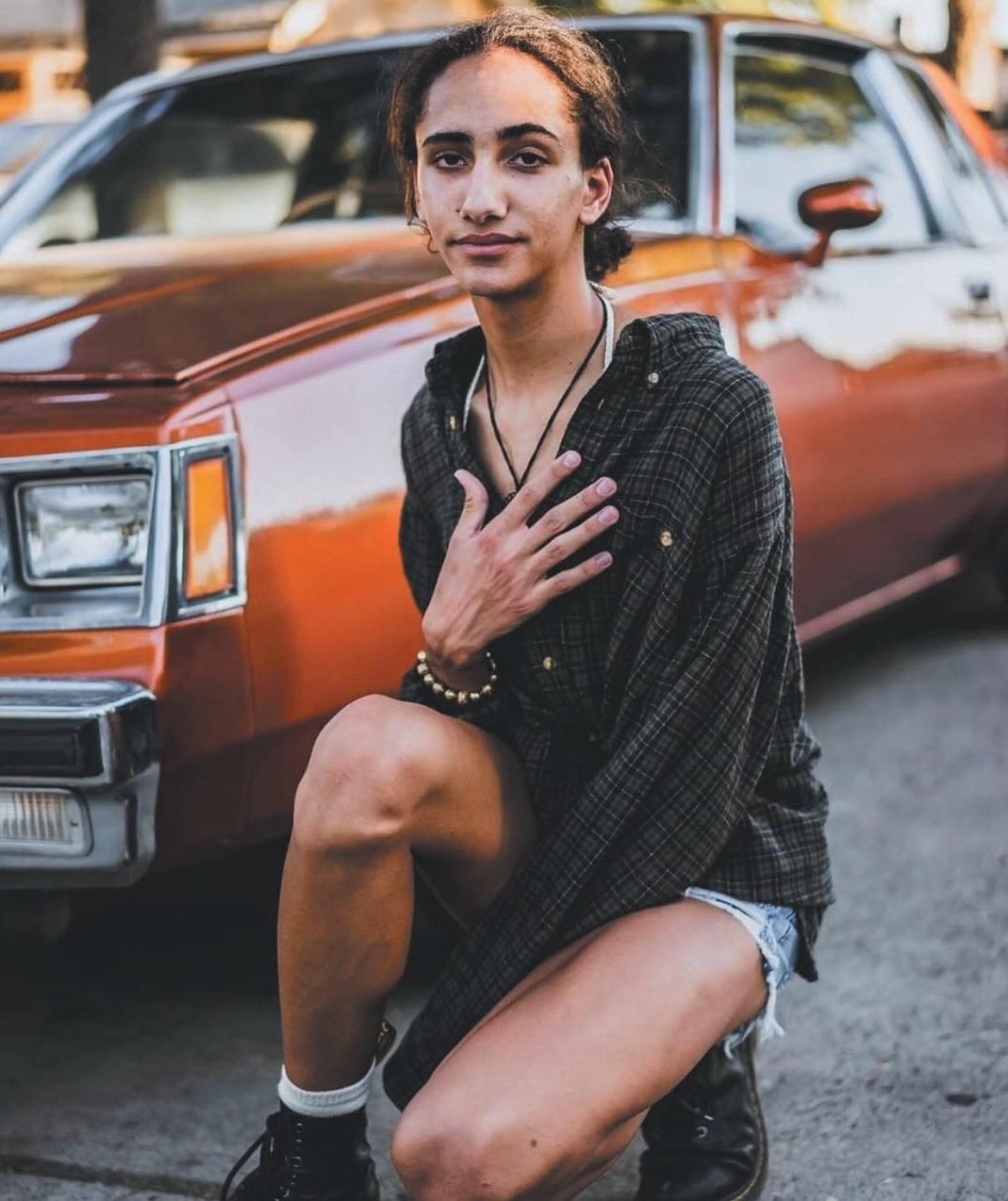
It was time for back-to-school shopping down in Main Street in the Central California desert town of Merced, when Aaron Smith was hoping to find some fresh clothing for her final year of highschool. “Thrift stores are my favorite because it gives me a challenge in fashion,” the 17-year-old said. “When you’re thrifting, it’s like a blank canvas; it’s just like clothes everywhere, and it’s your job to figure out what you want to do with them.”
Smith rummages through clothes, trying to find the right outfit that suits her palette. But while the 17-year-old loves thrifting and finding her own fashion, her identity hasn’t always been presented as it is now.
“I identify as a woman. I was born a man,” Smith said. “I always saw myself as a girl… so I don’t feel comfortable identifying as transgender because I haven’t identified as a man yet.”
And that's why Smith goes by the pronoun “she,” something that took her a few years to express.
“I knew in the back of my head who I was, but I didn’t know how to show it really, because I was always told who I was instead of being who I wanted to be.”
Smith lives in Atwater -- a small town in Merced County of just 29,000 people. She goes to Atwater High School, a place where she’s faced both discrimination and support because of her identity. Acceptance of identities outside of societal gender norms varies in this area.
Listen to an audio version of this feature story: tinyurl.com/YouthModel
Aaron Smith, 17, smiles for the shot, loosely holding her hand over her chest.
Photos: Joel Hernandez Fregozo
11 Calafia Issue 2019.indd 12 10/22/19 8:25 AM
Rachel Livinal We'Ced Youth Media
In Modesto – a city in a neighboring county – a group held a straight pride parade which drew loads of controversy to the community. Even though Smith has been praised for who she is at times, being accepted in the Valley remains a challenge.
She still remembers the first day she wore a dress to high school. “I was kind of nervous… I walked into class and everyone just looked at me,” she recalled.
It could have been a teen’s worst nightmare, but Smith held a different mindset.
“I just felt so comfortable and was just so happy with what I was wearing, nothing really mattered. I was just myself and it felt great,” she said.
Today, being looked at is the least of Smith’s problems. In fact, she gets looked at quite a lot for her job: as a model for We Love Your Genes, which scouts models for IMG, an international modeling agency.

“My interest in modeling started when I was about a sophomore. I just always had a feel for the camera,” Smith said.
Smith recently went to prom this past May with her thrifted $14 dress bought from a unique little store on Main Street in Merced called Cloud 9 Collections. Others have come to notice Smith’s style.
“She was trying on dresses and I think that we just thought she was very unique and exquisite, but she had very serious looks to her but in an amazing way,” said Rhiannan Amaheim, a worker at the store.
Smith has modeled a few dresses for the store and had the photos posted on both her Instagram and the store’s. Though she is not sure exactly how welcoming the industry will be, Smith plans to do more with her modeling in the future.
Victoria Secret recently put out their first openly transgender model, Valentino Salpaio. Salpaio is someone Smith admires, but she still strives to be seen in her own light.
“I just want to show everyone what I think fashion is because my view is so different from everyone else’s. My goal in the modeling industry is to be with Victoria's Secret one day,” Smith said.
Smith lives life choosing to see both positivity and negativity in her favor, like the first day she wore that dress. “I’ve always known my entire life that everyone has their own opinion. It’s really nice to hear other people’s opinion whether it’s good or bad because it just builds me up as a person,” she said.
Being a unique individual has its ups and downs, but being an optimist like Smith changes the world she chooses to see. In a world that still challenges those with different identities, Smith decides to face it all with resilience and style.
“I knew in the back of my head who I was, but I didn’t know how to show it really, because I was always told who I was instead of being who I wanted to be.”
Fall 2019 Calafia Issue 2019.indd 13 10/22/19 8:25 AM
Aaron Smith, 17, sits amidst the boxes near a dumpster for a harder look to her shot.
WOMEN ON THE RISE: ACTS WE’RE EXCITED ABOUT Symphreona Clark
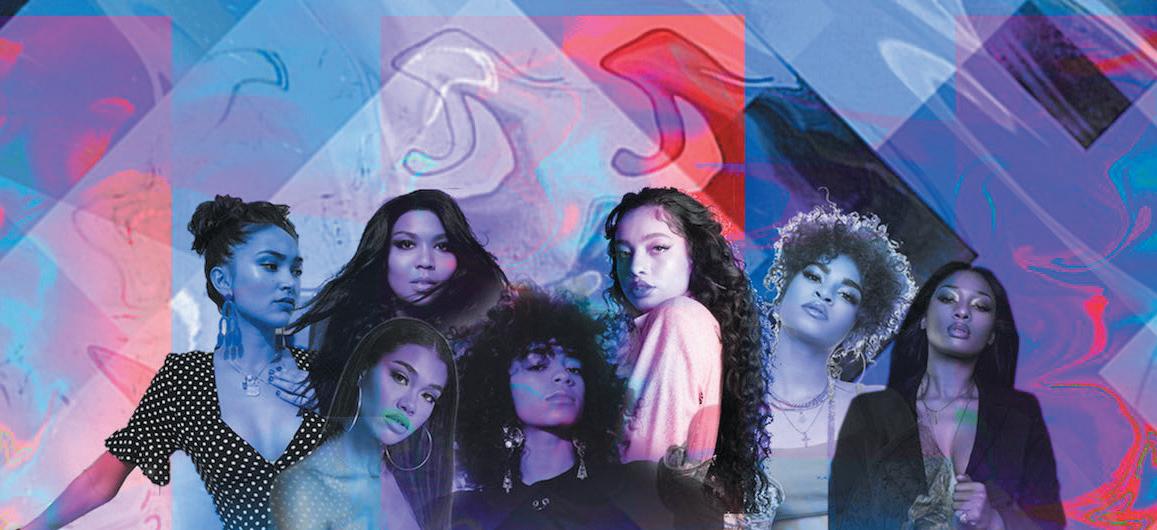
Megan Thee Stallion
If you’ve been on the lookout for what’s happening in music, you’ve might’ve heard the name Megan Thee Stallion. The Houston rapper quickly rose to prominence by posting videos of her rapping and freestyling on YouTube and Instagram. She became the first female rapper to sign to 300 Entertainment, an independent label with a roster that includes artists like Young Thug, Gunna, and Tee Grizzley. When she’s not making music, she’s studying health administration at Texas State University and has been vocal about not being boxed into a persona based on the music she makes — that she and women alike can be intelligent and still embrace their sexuality the same way that men do. Due to her already being compared to iconic female rappers like Trina and Lil’ Kim, and with her debut album “Fever” in the works, it’s safe to say she’s one of 2019’s top artists to watch.
Some others to check out:
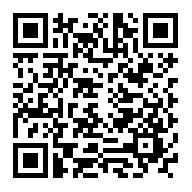
Lizzo Kiana Ledé
Lizzo has been making a name for herself in both hip hop and pop for some time now, with her zealous and energetic funk-filled music putting her in a lane of her own that’s trending towards becoming a standout star. Early in her career, Lizzo helped form an R&B girl group called The Chalice, where they garnered local success. Eventually, she began pursuing music on her own and released her debut album “Lizzobangers” in 2013, later that year Time Magazine named her an artist to watch. While her music is fun and easy to dance to, she also advocates for body positivity and self-love, making diversity the focus of her music. Recently, she’s performed at Coachella, completed an international tour, and released her third album “Cuz I Love You” where it’s been met with shining reviews.
Hailing from Phoenix, AZ, R&B singer Kiana Ledé first rose to popularity as an actress, playing Zoe Vaughn on the second season of MTV’s “Scream” in 2016. But her start in the entertainment industry began long before then. When she was 14, she won a national talent search by American Idol’s Season 8 winner Kris Allen, with the prize including a recording contract with RCA Records. After her cover of Drake’s “Hotline Bling” received over 40 million views on YouTube, the CEO of Republic Records flew her out to NYC and signed her later that day. She’s currently touring internationally and her most recent EP “Selfless”, released in 2018, received widespread praise and attention online.
Melii started making waves in 2017 when her bilingual cover of Cardi B’s “Bodak Yellow” went viral. What sets her apart is that she’s also a singer-songwriter and rapper, using her Dominican culture and her Harlem upbringing as an influence. Check out her debut album “phAses.”
At 27 years old, Kelsey Lu brings spellbinding and mesmerizing neo-soul with infectious pop undertones. Check out her debut album “Blood.”
Jay Crookes is only 20 years old but takes on mature matters of relationships and identity, her being half-Bangladeshi and half-Irish, and she is also vocal about modern political themes.
Amber Mark’s work is self-written, recorded, and produced in her bedroom, and, in 2016, her single “Way Back” quickly accumulated five million streams, climbing the charts on both Apple and Spotify.
When it comes to the music industry, women are capable of making an incredible impact despite the glass ceiling that remains and the field being male-dominated. I also know there’s a certain power that comes from women uplifting other women. This list represents women who define what it means to be multidimensional in the modern age: not having to be restricted to one type of voice.
Or visit tinyurl.com/RisePlaylist
Artwork by Isabelle Wolansky.
YR Media 13 Calafia Issue 2019.indd 14 10/22/19 8:25 AM
Check out the Spotify playlist below featuring women carving their place in the music industry:
A Bi-Divide in LGBT
Bisexual youth aren’t misjudged by only straight people, it’s by other queer people, too.
Society tends to see things in purely binary categories: black or white, right or wrong, male or female, gay or straight. However, life is rarely that simple. For example, sexuality is a spectrum, and while many identify on either end of the pole, a substantial and valid group of people reside somewhere in between.
In 2018, Gallup found that LGBT-identifying people make up 4.5% of the general population, with higher representation among the younger generation. Other studies show that within this group, a majority tend to identify as bisexual or pansexual, which means that they are attracted to more than one gender. However, a specific stigma targeting bisexual people exists, and it often comes from both straight and queer people alike.
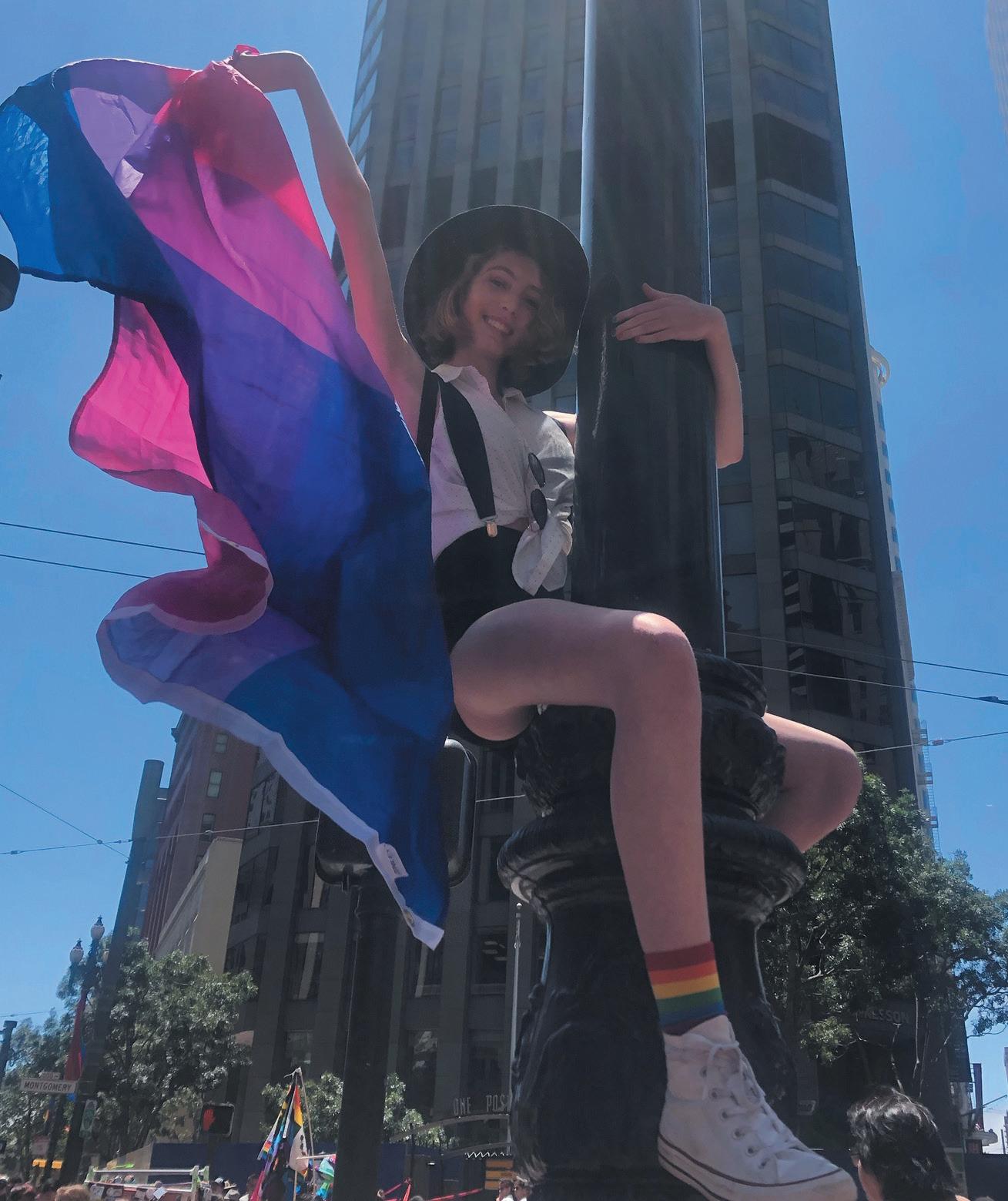
“I feel like it’s definitely harder [for people] to understand [bisexuality and pansexuality],” said Ethan, a transgender high school boy who identifies as pansexual. Bisexual and pansexual people of all gender identities face stereotypes, ranging from claims that their sexual identity is mere confusion, just a phase, or a way to try and “pass” as straight.
When gender is factored in to the way a bi or pan person is perceived, the stigma that they face is usually an exacerbated reflection of society’s pre-existing gender roles. They are given labels that already target women, men, and nonbinary people.
For example, bi or pan girls are typically shamed for being especially “slutty” and male-attention seeking, while bi or pan boys are seen as unmasculine. Meanwhile, nonbinary people are often excluded from conversations altogether.
Stories and Stereotypes Bisexual Men Face
Meet “John”
John* is a 16-year-old boy from Marin County who identifies as bisexual. “Some [LGBT] people think that [bi and pan people] should only be in homosexual-appearing relationships, rather than heterosexual relationships.”
He said that his historically liberal town outside of San Francisco is generally accepting of him, but that being male can make identifying as bi a bit more difficult. “I honestly think it’s better to come out as bisexual as a girl because it might even be more accepted,” he said.
Ethan
“I definitely feel like for men, there are more stereotypes, because in what I’ve seen it’s easier for females to come out than males,” agreed Ethan. “I had a lot of issues at first with people being like ‘you just don’t want to choose [a gender].’ I even had someone tell me that I was just trying to make it easier on myself to get a relationship, since I could be with a boy or a girl or whoever. People always ask me ‘is it a boy day or a girl day?’ And it’s not like I think, ‘Oh, I think I like boys today,’ or, ‘I like girls today.’ It’s more just about who comes along.”
He continued, “It’s hard for people to understand because it’s not just one or the other, it’s both or neither or all of the above… I wish people understood that it’s just the same as any other sexuality. Straight, gay, lesbian, bi, pan—it’s just who you love."
*Names have been changed to protect the privacy of some subjects.
Loughlin Brown
Stories and Stereotypes
Women
Meet Charlotte
“People think that bisexual women are actually straight and that bisexual men are actually gay… and I think that that’s catering to the way that society assumes that everyone should be attracted to men,” said Charlotte, a bisexual high school student who goes by she or they pronouns. “It bothers me when people think that bi girls are faking [their sexuality] for attention from guys… or that bisexuals are more likely to cheat because they have more options.”
“I think that some people are more accepting of bisexual people because they just think of them as ‘basically straight’… but at the same time people are less likely to think that bisexuality is a real orientation,” she said.
Meet “Sophia”
Sophia*, a 17-year-old girl in Marin County who identifies as bisexual, said that girl-on-girl relationships are both trivialized and fetishized. “Katy Perry’s like, ‘Oh haha, I kissed a girl and I liked it.’ Like, oh, just gonna be wild tonight,” she said. “That’s not what being a bisexual means… There’s also this thing in TV shows where [bisexual girls] are only with girls for another person’s enjoyment.”
These stereotypes affect the way that people understand Sophia’s sexuality. She said that people have discredited the depth of her relationships with girls. “One of my friends said, ‘You know, when [your ex-girlfriend] sees you with a guy it’s probably gonna hurt her worse, because it's a boy.’ Something about that statement is just not okay; she was speaking to an experience she didn't know. She was somehow considering me dating a guy as more real and more worthy than me dating another girl.” At the same time, she said that boy and girl relationships are also looked down upon when you’re bisexual. “When you’re dating a guy, [the LGBT+ community] can discredit you. I’ve heard people who are LGBT talk about how a bi girl brought her boyfriend to pride and that ‘that wasn’t okay.’ Things like that should be accepted.”
Championing the bisexual flag, student Willow Baker climbs a post in San Francisco during 2019 Pride.
Photo by Loughlin Browne
Fall 2019 Calafia Issue 2019.indd 15 10/22/19 8:25 AM
Bisexual
Face YLI Marin
Working in the Fields A Sisterhood Amid Grapevines
Fatima Ramirez Coachella Unincorporated
Today is July 30. The weather is predicted to reach 109 degrees fahrenheit today. Most are advised to stay indoors, but for the farm workers living in the Eastern Coachella Valley, their jobs rely on their ability to not only stand the heat, but work strenuously while the blazing sun beats on their backs. For women like Maria E. though, the scorching heat is not the most dangerous part of her job.
An immigrant originally from Michoacán, Mexico, Maria has been living in Mecca, California for the last eight years.Seeking a safer and more prosperous future for herself and her two children, she left her life behind and started anew in a land of promised opportunities.
Many women’s stories in the Eastern Coachella Valley begin the same way and with similar circumstances — like lack of sufficient English and proper documentation — resulting in them working in the agricultural field. Although field workers have historically been excluded from many legal protections, such as those that aim to monitor wage practices, women in particular are at a dangerous disadvantage with the threat of sexual assault looming over them.
“Working along men in a place that isn’t very monitored can be scary,” says Maria, 42 years old, in Spanish.“The men think that they can talk about your body or even ‘accidentally’ grope you sometimes.”
A UC Santa Cruz study reported that 80% of 150 women working in the Central Valley experienced some form of sexual harassment. It also estimated that roughly a quarter of California’s almost 1 million farm workers are female.
More data on exactly how many women have experienced some form of sexual assault while in the fields is scarce and iinconsistent, likely due to the women’s immigration status and job vulnerability, advocates say, as most female farm workers are in desperate need of money and have little other alternatives.
“They’re scared. They don’t speak out because of fear,” says Manuela Ramirez, a spokesperson for Lideres Campesinas. The group organizes female farm workers through civil rights education, social support, and by encouraging them to take on local leadership roles in the community.
Based in nearby Thermal, Ramirez often hears testimony from women and finds that male bosses, too, are harassing the women farmers.
“I used to work in the fields myself. I know firsthand how uncomfortable it is to work in a place where you don’t feel safe,” says Ramirez. “Men abuse their power and use their position to ogle and accost.”
Some women farmers have resigned to creating an unofficial support network amongst themselves, in an attempt to stave off unwanted sexual advances from male colleagues. They do this by watching over each other during work, speaking up when a fellow woman is assaulted and, most importantly, by insisting on working next to each other.
“If we had women as our mayordomos (supervisors) I don’t think this would happen, and we would probably finish our work faster since we don’t have to keep looking over our shoulders,” says Maria, who is using only her middle name to protect her identity. “I’ve worked with a mayordoma before and you could feel the difference. It’s safer.”
Sara, a seasonal laborer in Mecca’s grapevines, has been a mayordoma for the last 13 years following the harvest along the coast of California. For similar concerns, she is using a pseudonym. Originally from Guerrero, Mexico, the 55-year-old says in her native Spanish that, “I don’t have a lot of options for jobs here. I came to the United States to give my children an education and that means working in the fields.”

She’s noticed that the women farmers working with her tend to be more at ease.
“I think women like to work with me around because they feel safe, and more importantly, they know that if they complain to me about something, I won’t fire them or make it worse. They trust me.”
Fear of reprisals pushes many of the women farmers into silence. The possibility of encountering immigration authorities is also too risky. “We need to be heard and I need to know that if I talk about this I won’t lose my job or be intimidated into quitting like I know has happened to other women,” adds Maria.
The women seem almost indistinguishable from the men while in the fields, being covered from head to toe in garments aimed at preventing dust inhalation and sun protection. But the garments prove to be no protection from harassment.
“The sexual comments especially make me angry because there’s no reason for that to be said here,” says Maria. “I try really hard so the men know that I don’t tolerate that happening here. This is a job and women deserve to know that their bodies won’t be talked about.”
Facing such hardship, some might wonder why the women choose to risk so much and make the trek into the United States in the first place. As Maria explains, “I do this for my children. So they could have an easier life, a better future, to give my daughter the things I didn’t have.”
The hope is always there for the next generation. “My daughter is going to college next year, I’m making sure of it. She’s really smart and I know she won’t have to struggle the way I do in the fields. She won’t have to put up with the men or the pain in my knees.”
15 Calafia Issue 2019.indd 16 10/22/19 8:25 AM
The sun begins to set over over the farms and greenery in Mecca, California.


“I used to work in the fields myself. I know firsthand how uncomfortable it is to work in a place where you don’t feel safe.”
Fall 2019 Calafia Issue 2019.indd 17 10/22/19 8:25 AM
All photos by
Fatima
Ramirez.
Cultivating The Next Generation of Sikh Leadership
In
Manpreet Kaur, a first-generation Punjabi Sikh, has always had a special attachment to her community. Born and raised in Bakersfield, she never spent too much time away from her hometown. Even when she was attending college, she came home often to visit her family. When she came home during breaks from college, her mother told her she visits too much.
But Kern County is home for the 26-year-old, and she always knew she wanted to give back to and invest in her community. That’s why she has been working as a community organizer with the Jakara Movement, a statewide organization that creates a “new generation of Sikh leadership through individual development and community building.”
After graduating in 2015 from the University of California, San Diego with a degree in Political Science and Ethnic Studies, she met with the executive director of the Jakara Movement. The director was looking for someone to lead a local chapter in Bakersfield. It was that meeting that led Kaur to joining the team.
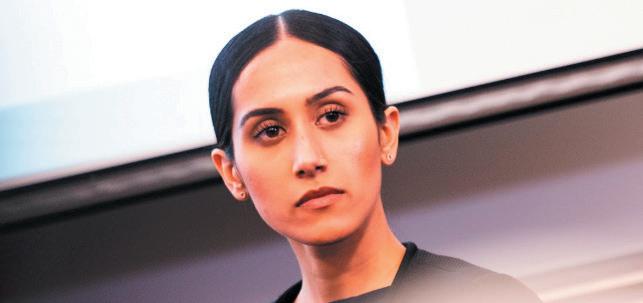
“No one else does what we do with the youth,” Kaur said. “We have become a resource for the community.”
The Jakara Movement works with Sikh youth on various projects to strengthen their identity and consciousness as Sikhs, to foster education through service-learning and to inspire activism and volunteerism, according to the Jakara Movement’s website.
“[We] want to train the next generation of leadership to emerge,” Kaur said. One of the big projects Kaur has worked on is the renaming of Stonecreek Park.
The local Jakara Movement chapter led an effort last year to rename the park in honor of Jaswant Singh Khalra, a renowned human rights activist from India and a Sikh. At the time of this writing, the group had still been working on the project.
It was Sikh Punjabi women who have inspired Kaur to become the woman she is today and to get involved in the type of work she does.
“My female role model(s) are Sikh Punjabi women — those before me and those with me today, the carriers of our culture,” she said. “In shaping my sense of self, they have been my greatest teachers.”
“They have had the patience and have given me encouragement in many different stages of life, coming to me in different roles whether it was a Sunday Punjabi school teacher instructing me to read Gurmukhi (our native Sikh script of writing), or it was my own maternal grandmother and mother exemplifying resiliency and tender love everyday.”
Kaur said there are countless Sikh Punjabi woman in Kern who have not only created a powerful voice of their own, but have more importantly made a seat at the table for other women to join them.
“I admire those women,” she said. “So many of the Sikh Punjabi women in my community inherently exemplify sacrifice, selflessness, confidence, beauty, wit, and grace.”
Kaur takes these lessons she has learned from her role models and uses them in her work to encourage the youth involved in the movement. The Jakara Movement has expanded into creating local chapters within high schools where students of all ethnicities learn public speaking skills, networking and a sense of community. Kaur goes to different high schools and colleges to talk about the organization and encourage students to get involved.
“The real victory is seeing people want to do what I do and be a part of that,” Kaur said. “[We] want them to be invested within their community with their time and effort and even if they leave, we want them to return to help others, uplift the community, and create a strong network that supports one another.”
Kern County, a Punjabi Sikh woman organizes youth to build community and strengthen their cultural identities.
Jessica Manzo South Kern Sol
17 Calafia Issue 2019.indd 18 10/22/19 8:25 AM
Growing Up Latina… with Many Restrictions
Growing up as a female is hard enough as it is. What makes it even more difficult is being raised by two parents who place a multitude of restrictions on you for being a girl.
All my life I have been disallowed from doing certain things, not because I am physically or emotionally incapable of doing them, but simply because I am a girl. Being a girl meant others’ obligations were met, prioritized, over my own desires. According to my parents, I have certain responsibilities as a female, limiting what I can do, think, like, wear, and say. But life should have no limits.
Traditional Mexican cultural norms are what my parents know the most. They definitely try their best to understand that it’s different being raised here in the U.S. as to how it was in Mexico years back. But it’s hard for them to understand me and adapt to the customs here.

I respect my parents and don’t see anything wrong with their customs, but their style is simply just not for me. I know they just want what’s best for me and I truly appreciate everything they do but I also don’t want to live my life with limits. It’s a hard balance between being obedient and doing what I like, which is being myself: a Mexicana raised in America.
Restricting My Hobbies
I had to learn how to cook before I could learn how to drive. I had to learn how to clean before I could learn how to play a sport. I wasn’t allowed to express interest in activities that had any sign of masculine attributes; so wanting to play soccer or learning how to skateboard was not really an option for me.
Restricting My Look
Not only was I not permitted to wear any mens’ clothing like those comfortable basketball shorts, baggy hoodies, or even unisex sneakers, but I also couldn’t wear super girly clothes.
My tomboy look was frowned upon and my short dresses brought me judgement. The simple act of even wanting to get my eyebrows done or shave my legs for the first time took months for me to convince my parents. Dyeing my hair was inconceivable. Wearing makeup came with exceptions: Light mascara and lipstick was fine but nothing more, according to my parents.
Restricted to the Kitchen
My parents started telling me my responsibilities at a young age. I didn’t mind being taught to always pick up after myself. What I didn’t appreciate was being expected to pick up after a male, as well.
“Ni que fueras un hombre (As if you were a man)” was what my mom would tell me every time I would have a mess in my room. It’s as if I was being trained to be the perfect maid.
A woman should know where everything in the house is and, according to my parents, that’s what my main role had to be. “¿Como no vas a saber donde estan las cosas si eres mujer? (If you’re really a woman, how do you not know where things are?)”
Restricting My Social Life
I was allowed to go out with my friends as long as there were no boys. I could go out with the condition that I had to be back by a certain hour. I could only go out maybe once a week because two days in a row was far too many.
My parents have always been strict, which I understand for some reasons, but not others. Most of the time, it’s for safety reasons. They want to make sure I’m going to be okay. According to them, they trust me but they don’t trust everyone else. Other times, I simply don’t know or understand why they add restrictions to things. It’s frustrating thinking that there are so many things I want to do but do not receive my parents’ approval.
Restricting My Future
The restrictions continue. I love my parents with all my heart and thank them for the way they have raised me. It’s because of them that I know how to respect others and myself. I mostly understand my parents’ way of thinking, the way they believe things should be, but I simply cannot follow the same culture they have been taught.
I do feel that as a girl living in this society, I should be more careful and cautious, but I also believe that I cannot live with fear. I will not live worried of the judgement and criticism I will receive for my actions based on the sole fact that I am a girl, and not a boy. And that’s why I live my life without limits.
Fall 2019 Calafia Issue 2019.indd 19 10/22/19 8:25 AM
All my life, I have been taught to believe that I have limitations on what I can do, think, like, wear, and say.
Cendy Sarabia YLI San Mateo
Chicana. Daughter. Rodriguez Olivia yli



Olivia co-produced the award-winning Estamos Aqui, a community documentary that reclaimed the narrative of the Salton Sea for the communities of the Eastern Coachella Valley. Follow YLI for more #IAmALeader stories.

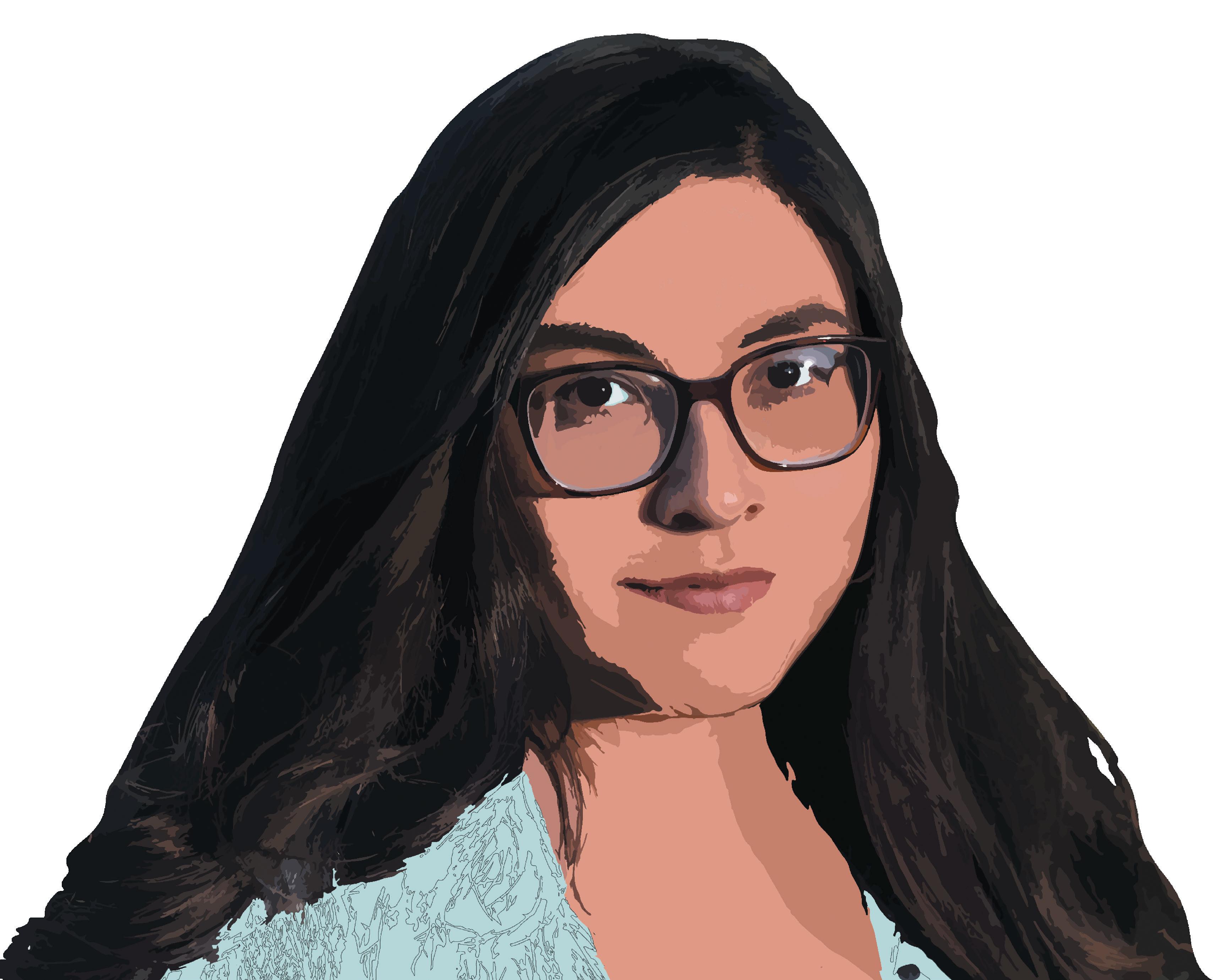 Writer.
Feminist. Partner. Leader.
Writer.
Feminist. Partner. Leader.
Calafia Issue 2019.indd 20 10/22/19 8:25 AM





















 Teacher extraordinaire Jen Bowman speaks to Vice News while attending the Women’s March in Washington, D.C., on January 21, 2017 (Vice YouTube screenshot).
Teacher extraordinaire Jen Bowman speaks to Vice News while attending the Women’s March in Washington, D.C., on January 21, 2017 (Vice YouTube screenshot).
















 Writer.
Feminist. Partner. Leader.
Writer.
Feminist. Partner. Leader.